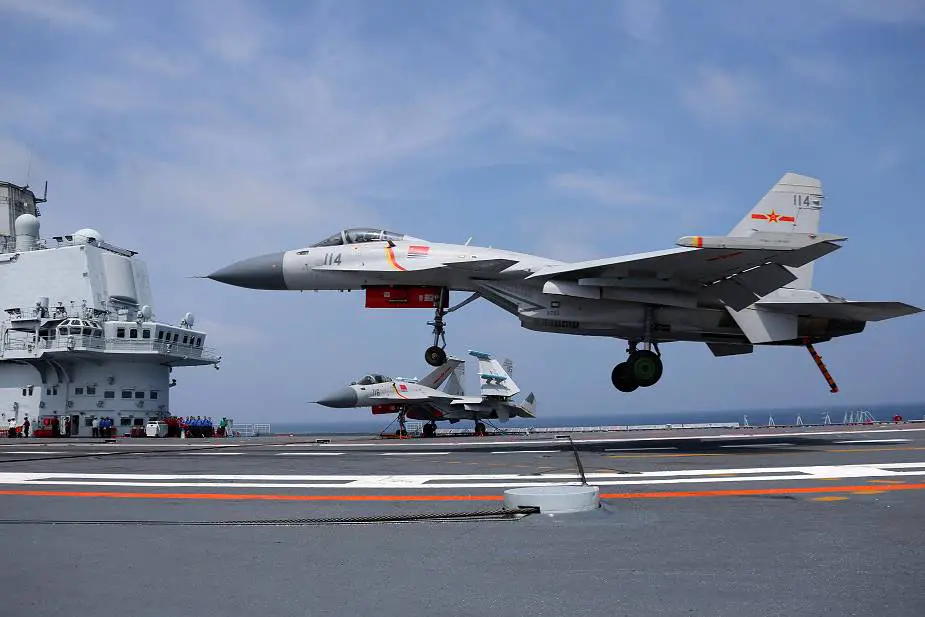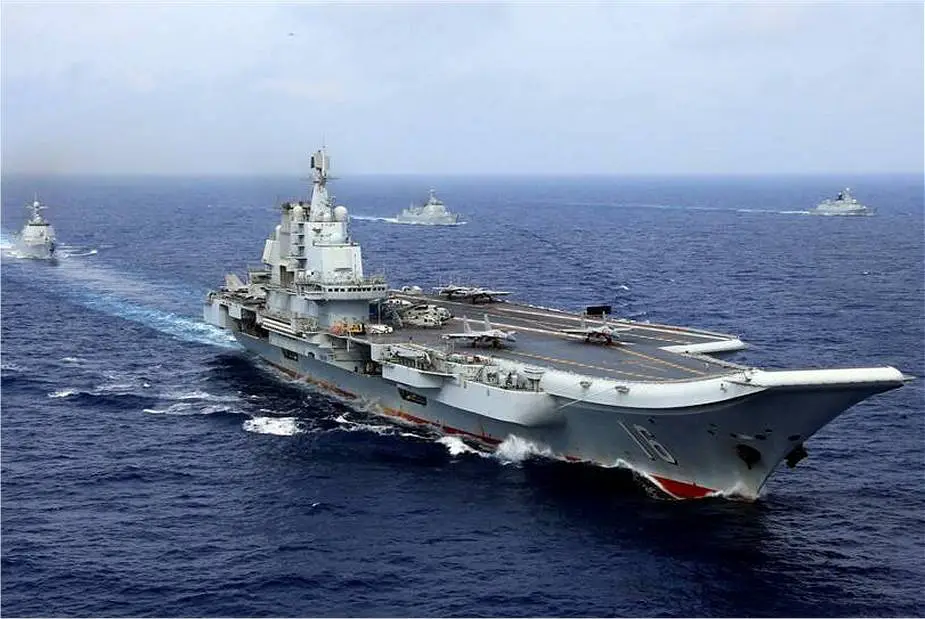Breaking news
New Chinese pilots of J-15 fighter are qualified for operational deployment on Liaoning aircraft carrier.
According to information published by the Global Time website on November 6, 2020, the Chinese People's Liberation Army (PLA) Navy aircraft carrier Liaoning or Type 001 has been at sea over the past week, making history by qualifying the first batch of new J-15 fighter jet pilots who were directly recruited from high school and trained specifically to fly carrier-based aircraft.
Follow Navy Recognition on Google News at this link
 A carrier-borne J-15 fighter jet makes an arrested landing on the flight deck of the aircraft carrier Liaoning during a training exercise. (Picture source China MoD)
A carrier-borne J-15 fighter jet makes an arrested landing on the flight deck of the aircraft carrier Liaoning during a training exercise. (Picture source China MoD)
This new pilot training mode, together with the previous model that sees pilots of traditional aircraft switch to carrier-based aircraft, can effectively cultivate new pilots for carriers and fulfill the demand of China's growing aircraft carrier fleets.
With an average age of 20, the newly qualified pilots are from the first batch of carrier-borne fighter jet pilot cadets directly recruited from high school and enrolled at the university, the statement said, noting that this new pilot development mode, dubbed the "cultivation mode," is successful.
Although switched pilots may have accumulated flight experience in the previous service, such experience is not necessarily helpful as muscle memory may hinder them from adapting to shipboard aircraft, Li said. Pilots usually throttle down the engine when landing, but carrier-based aircraft pilots, they need to keep that or even throttle up.
The Liaoning has set four other new records in the fighter jet pilot program, namely the largest number of pilots qualified for fighter jet operations on an aircraft carrier in one test, the youngest average age, the lowest time needed for flight training, and the shortest period used for certification, according to the PLA Navy statement.
In addition to fighter jet pilots, China's aircraft carrier talent cultivation programs are also training personnel for special mission aircraft, helicopters, combat logistics and drones.

The Chinese navy Liaoning aircraft carrier would carry 36 aircraft including 24 Shenyang J-15 fighters. (Picture source Chinese MoD)
China now operates two aircraft carriers, the Liaoning and the Shandong, after the latter entered PLA naval service in December 2019. The two completed regular exercises and sea trials in September, China's Ministry of National Defense announced at that time.
The Liaoning or Type 001 is the first aircraft carrier that was commissioned into the Chinese Navy. On 4 November 2012, the People's Liberation Army's website reported that Shenyang J-15s had performed carrier touch-and-go training. On 25 November 2012, China announced that J-15s had made five successful arrested landings on Liaoning. In June 2013, the second round of flight tests began on board Liaoning, with personnel from the fleet air arm of the Brazilian Navy providing carrier training support to the People's Liberation Army Navy Air Force who operates the J-15s.
The J-15 is the main fighter aircraft uses onboard the Chinese aircraft carrier Liaoning. According to Chinese military sources, the Liaoning would carry 36 aircraft including 24 Shenyang J-15 fighters, six Changhe Z-18F anti-submarine warfare (ASW) helicopters, four Changhe Z-18J airborne early warning helicopters and two Harbin Z-9C rescue helicopters. The flight deck is able to carry about 50 warplanes, including helicopters and fixed-wing aircraft.
The Shenyang J-15, NATO reporting name: Flanker-X2, also known as Flying Shark is a 4th generation, twin-engine, all-weather, carrier-based fighter aircraft developed by the Shenyang Aircraft Corporation and the 601 Institute for the Chinese People's Liberation Army Navy's aircraft carriers.
The Liaoning’s aircraft-launching system relies upon a ski jump-style deck instead of the steam catapults used by the United States and France, forcing the aircraft to expend considerable internal fuel during takeoff and thereby severely curtailing its payload. The J-15 fighter can be armed with two YJ-83K anti-ship missiles, two short-range PL-8 air-to-air missiles, and four 500 kg (1,100 lb) bombs.





























